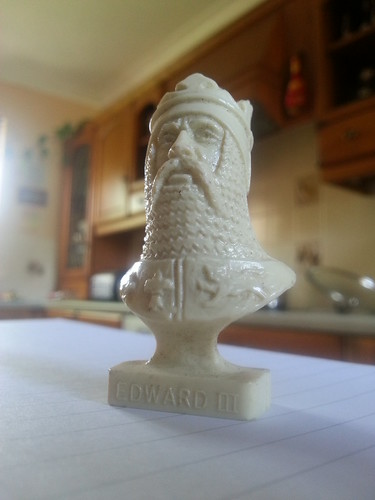Fetish…an inanimate object worshipped…because it is considered to be inhabited by a spirit.
Not sure about the worshipped bit, but in the context of documentary fetishisation appears to play a significant role. Because we “know” an image was taken by a particular photographer we imbue it with a sense of authenticity and consequently we can assign the concept of “truth” to it. The same seems to me to be true of objects. McCullin’s bullet damaged Nikon feeds our narrative of the risks he – and by extension other war photographers - must have taken to get his images, which in turn feeds our view of the authenticity of war photographs.
It seems to me however, that in order to assign this value to it we must have prior knowledge of the context. Without prior knowledge we cannot know that the damage to the Nikon was caused by a bullet. Similarly we cannot know it was owned by Don McCullin. So where does this leave photography as a “document”? For the individual photo I can’t help feeling it is pretty well nowhere. Without context the narrative is ours to imagine – take this personal example (excuse the quality – it was shot with my phone cam for the sole purpose of being a note here).

Students of history will be able to tell you that Edward III was a militarily successful king of England who restored the power of the English throne after the disastrous reign of Edward II his father. Some might guess that this model was part of a collection and on that basis assume I had an interest in tacky collectibles or mediaeval history. The truth is vastly more complex – this little object played an significant role in my growing up. During the strikes of the early 70’s my Dad taught me to play chess by candlelight. This statue took the part of one of the knights, which had been lost years before – perhaps even before I was born.It turned out I was pretty good at chess (sadly no more) and this had a significant impact on my school life.
None of this is visible in the image, yet any documentary of my life would have to include it. In a paper on the use of objects in biographical exhibitions Albano states: “Objects pervade our life and are imbued with biographical significance to the extent of becoming inseparable from us.”
A broader application of the same general principle is applied in the BBC’s A History of the World in 100 Objects. I was particularly struck by one of the earlier episodes where David Attenborough says that holding a stone axe links him directly to the first humans on the plains of Africa, and allows him to imagine what it would be like relying on a stone axe for a living.
Where is this going? I think this is part of my ongoing justification for concentrating on documentary through objects. It is also an attempt to explain what I feel when I look at the objects on the beach at Workington – that I can almost hear the roar of the furnaces when I look at the slag skulls, that I get a sense of awe that a single industry can generate structures as huge as the slag banks and that they have a huge story to tell given the proper context.

I believe, until someone tells me otherwise, that this is effectively solidified froth from a blast furnace or perhaps more likely the effect of pouring very hot slag onto wet ground or into the sea. Either way when I handle it it conjures up the elemental forces at work in its creation – I have effectively imbued it with the spirit of the industry that created it. I think that may make it a fetish object in this context.
References to follow
No comments:
Post a Comment